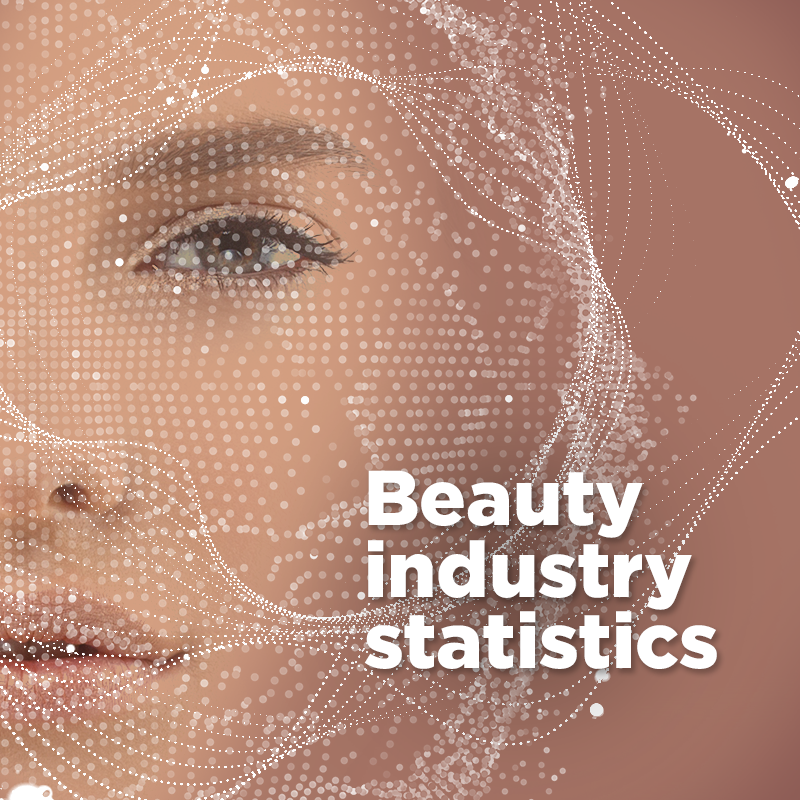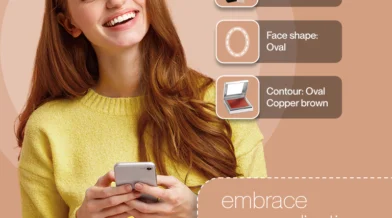In recent years, the beauty industry has been undergoing a transformation powered by AI and AR technologies. These technologies offer a personalized experience to consumers, reshaping the way they discover, try, and buy beauty products.
Let’s dive a bit deeper into some essential beauty industry statistics that underline the trends and projections of the industry.
Beauty industry stats: Growth and projections
The beauty industry is experiencing unprecedented growth, supported by cutting-edge technology integrations.
Here, we take a glimpse of some crucial beauty industry statistics and projections that illustrate the growth trajectory:
| Beauty industry market value: The industry is expected to attain a market value of $937.1 billion by 2030, while its 2023 value stands at $557.24 billion, according to a report by Grand View Research. |
| The global AI beauty market was valued at $2.68 billion in 2022, with an expected compound annual growth rate (CAGR) of 14.4% from 2022 to 2027, reaching a projected value of $6.8 billion in 2027. |
| Global economy boost: AI could add an extra $15.7 trillion to the global economy by 2030, according to PwC’s Global Artificial Intelligence Study. |
| Global beauty tech market: It is predicted to reach $8.93 billion by 2026, which is a growth of over 102% compared to 2022 when it was $4.41 billion. |
| Extensive, three-year research conducted by Harvard Business School showed that the companies that embraced digital transformation saw an 18% higher gross margin compared to the digital laggards. |
Makeup industry statistics within the consumer landscape
Consumers are becoming more demanding, seeking personalized experiences when shopping for beauty products.
The consumer landscape is evolving, with trends pointing towards a greater appreciation for personalization and online research. Here are some important makeup industry statistics that map out the current consumer landscape:
| Personalized recommendations: According to a McKinsey & Company study, when provided with personalized recommendations, 76% of consumers are more likely to make a purchase and 78% are more likely to re-purchase, as well as recommend your company to friends and family. |
| Customer experience: Nearly 90% of customers believe the overall shopping experience a company offers them is just as important as its products and services, a study by Salesforce reveals. |
| Online research: 57% of beauty consumers prefer to research products online before deciding to purchase them in-store, a trend known as the ROPO effect (research online, purchase offline). |
| In-store testers: 2/3 of makeup users no longer want to use and/or completely avoid physical, in-store testers. |
Beauty AR developments: Key beauty industry statistics
Augmented Reality (AR) is no longer a futuristic concept. It has firmly rooted itself in the present, offering immersive and personalized shopping experiences. Here are the pivotal beauty industry stats surrounding AR technology.
➥Virtual try-on effects:
- When using virtual try-ons, customers are 2.4 times more likely to buy.
- Implementing a virtual try-on solution can result in up to 64% fewer product returns.
- When advertising your beauty products with AR, you can get up to a 94% higher conversion rate.
➥ AR adoption and preferences
- Over 90% of Americans are already using or would consider using AR for shopping.
- Another study projects that by 2025, nearly 75% of the global population and almost all smartphone users will become frequent users of AR.
- According to Snapchat’s 2022 Generation Report, 93% of Gen Zers are inclined to use AR for shopping, with 88% of them wanting to use AR for makeup try-ons.
- 59% of consumers have said they would be likelier to purchase a product that’s visualized through AR.
➥ Smart devices growth
- The market for smart devices in the beauty industry – such as AR mirrors – is growing at an annual rate of 18.8% and is expected to reach $144.2 billion by 2028.
Try Arbelle beauty AR
In the booming virtual makeup try-on space, Arbelle stands out as a top solution, offering a range of features that provide a seamless and realistic experience. Here’s why Arbelle should be your go-to beauty AR solution:
- Easily and seamlessly integrates with existing platforms
- Provides highly accurate tracking and rendering
- Provides ultra-realistic virtual representations of physical products
- Lightweight technology that ensures smooth real-time performance
- Allows for extensive customization options
- Compatible with a wide range of devices
But don’t take our word for it! Click here to try it live now, or contact us and we’ll get you started in no time.
Get started with Arbelle
Contact us today and we’ll help you create the optimal beauty AR experience for your app, website, or smart mirror.



